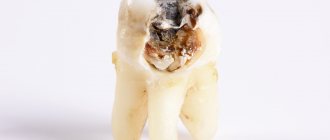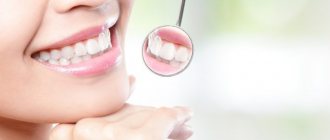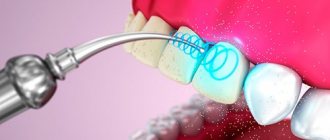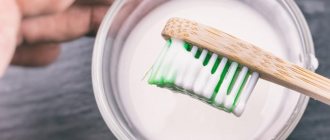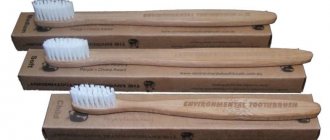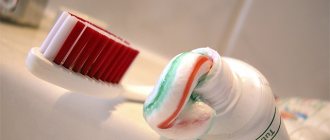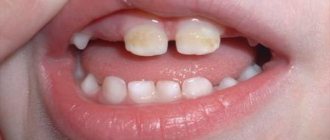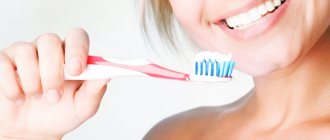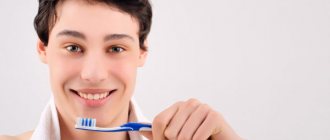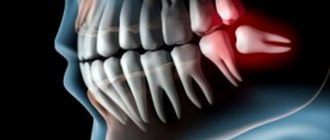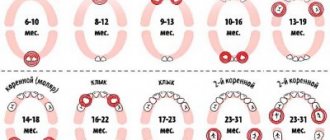Have you had your teeth whitened and your doctor recommends following a white diet? Do you want to know the exact checklist of foods that, according to dentists’ recommendations, should not be consumed on a white diet. What can replace products with coloring pigments? Experts told us about this and much more.
The white diet is a special type of diet in which a person consumes non-coloring foods, that is, without pronounced pigment. The so-called transparent diet is prescribed after teeth whitening. A colorless diet is recommended for patients to consolidate the effect, preserve the resulting color of tooth enamel for as long as possible, and protect from exposure to various substances. Also, a white diet should be followed when whitening at home.
Clinical case with a transparent diet: the patient planned home teeth whitening. I purchased special products from the dentist (mouth guards with gel) and consulted with a dentist. It is recommended to adhere to a colorless diet throughout the entire whitening period (about a week), as well as for another 7–10 days after the end of the course.
Following a colorless diet is important not only for maintaining the effect of the procedure. You should not subject additional tests to tooth enamel, which is somehow weakened after whitening procedures and has a porous structure. In two to three weeks of the white diet, the enamel will be restored, and you will be able to return to your usual lifestyle, but with certain nuances in the pigment content of the products.
How strictly should you follow the white diet?
As much as possible with a diet. For example, in order for the effect to last for a long time, when on a white diet, you should avoid foods with coloring pigments for 2 to 3 weeks after the procedure.
Also, as part of the white diet, experts advise gradually introducing useful habits: partially or completely giving up red wine, coffee or black tea, drinking colored drinks through a straw, replacing the same tea with kefir or milk.
Remember! Pigment substances are not harmful to healthy tooth enamel, but in the presence of inevitable microdamages after bleaching, dyes can penetrate deep into it and stain it.
The most important thing in the white diet is to pay attention to the color of the foods. The diet has no strict restrictions on the quantity or variety of food products.
Maintaining the whitening effect
Do not forget about general recommendations for oral care, namely:
- Visit your dentist regularly.
- Take care of your teeth. There are special devices for cracking nuts.
- Get rid of bruxism (creaking at night). This habit leads to thinning and the formation of microcracks.
- Don't forget to floss after every meal.
These are only general recommendations that lead to damage to the integrity of the enamel and discoloration. All people have teeth, and caring for them today has become a cultural tradition, and not just a tribute to fashion and external beauty.
What can you eat on a white diet after bleaching? Ready set of products
Form your white diet diet in such a way that you don’t just eat “colorless” foods (bananas, milk, cottage cheese), but are as beneficial as possible for your teeth. In particular, foods high in fluorine and calcium, vitamin C, A, E are beneficial, and such a healthy white diet will have a positive effect on the condition of the enamel and immunity in general.
TOP 10 food groups for a white diet:
- Dairy products without dyes (for example, if it is yogurt, then without fillers, light): cottage cheese, milk, yogurt, butter, hard cheese, curd mass;
- Fish and various seafood: sea and ocean fish, squid, scallops are especially useful. To make sure there are no dyes in products, always read the ingredients;
- Fruits: pears, green apples (preferably not raw, but baked), bananas. It is important that the fruits are non-acidic and do not irritate the enamel;
- Poultry meat (turkey, chicken), as well as soy products with a colorless diet;
- Bakery and pasta products;
- Cauliflower, white cabbage, Brussels sprouts;
- Egg whites and avocados are ideal foods for a transparent diet and overall health;
- Potato;
- Porridge: rice, semolina, pearl barley;
- Asparagus, celery, steamed - not just a diet, but proper nutrition.
Note! If you are in doubt about any of the listed white diet foods, simply cook them. For example, if you want to cook a dish with Brussels sprouts, but you find them too green, steam them or bake them in the oven.
The presented hit list of 10 products of a colorless diet will allow you to eat well for several weeks, get all the nutrients, but not risk whitening your teeth.
Also monitor the temperature of your diet food. It should be warm, but not hot or cold, so as not to jeopardize your tooth enamel.
Practical advice
If you cannot deny yourself the pleasure of eating your favorite foods, then you will be interested in several practical tips that reduce the risk of developing tooth discoloration:
- Do not drink coffee and tea too hot, do not alternate with cold water. Changes in heat and cold are no less destructive to enamel than the development of plaque.
- Minimize the consumption of bright berries (blackberries, blueberries), replacing them with lighter ones (apples, melons, grapefruits). You should not abuse juices, especially not freshly squeezed ones. Play it safe by rinsing your mouth.
- Be careful when consuming carbonated liquids. If you can't resist sweet carbonated drinks, use a straw. It's simple, effective, and does not harm the enamel.
- Less sugar is the motto of the modern generation. Eliminate candies like toffee and those containing unnatural dyes from your diet. It definitely won't get any worse.
- When consuming sauces and bright spices, we can recommend combining them with broccoli and lettuce, which will minimize the harm caused.
In addition, it is necessary to remember that products that stain teeth should not remain in the oral cavity for a long time. After drinking a drink or product containing pigmented particles, it is advisable to rinse your mouth.
Important! It is not recommended to brush your teeth within half an hour after eating food. During the period of eating food, a low pH (acidic) environment is created in the mouth to activate the enzymes of the digestive system.
The other side of such an environment is the softening of the enamel. Additional mechanical stress can lead to destruction of the enamel.
The video provides additional information about foods that are harmful to teeth.
What exactly is not recommended to eat on a white diet? Stop list of products
The white diet excludes the following foods from the diet:
- black and green tea. By the way, it is green tea that causes plaque to form on teeth extremely quickly. This product should also be excluded from the white diet so that your teeth do not darken after whitening;
- bright sauces: tomato, soy, adjika, ketchup, etc.;
- coffee, cocoa are obvious stop drinks of a transparent diet;
- colored fruits: plums, dark grapes, red apples;
- fruit and vegetable juices, compote, fruit drink;
- chocolate, lollipops, dragees;
- citrus;
- jam;
- egg yolk;
- red wine.
What foods stain teeth?
- Coffee
. Lovers of this drink most often have a yellow or brownish coating on their teeth. This is due to the cocoa butter, heavy carbohydrates and sugars contained in coffee. Instant coffee has a greater effect on dental health than ground coffee.
enamel. You can reduce the effect of coffee on your teeth by diluting it with milk or water. It is also best to limit your coffee intake to one cup per day. - Tea
. Contains tannins and, like coffee, stains teeth a yellowish-brown tint. Tea in bags is most harmful to teeth: due to the artificial components contained in it, which happens very often, it stains teeth more than leaf tea. The type of tea - green or black - does not matter. - Wine
. White wine contains acids that negatively affect tooth enamel, causing microcracks to appear through which coloring substances penetrate deeper. Red wine contains tannins and a burgundy-red tint, which also contributes to tooth staining. - Carbonated drinks
. Not only do they change the color of your teeth, but they can also leach calcium from your teeth. In addition to a huge amount of sugar, they contain malic, citric and other acids that literally “corrode” the enamel. You should especially beware of colored soda - it not only corrodes the enamel, but can also stain the tongue and teeth in poisonous colors. If you decide to drink Coca-Cola, do it through a straw, this will reduce the harmful effects on your teeth. - Juices
. Bright and dark juices, such as pomegranate, cranberry, grapefruit, etc., due to their bright color, can also cause yellowing of teeth. It is healthier to simply eat fruit or drink juice diluted with water. - Vegetables and fruits
. Berries that are rich and dark in color, such as blueberries, blackberries, blueberries, cherries, and cranberries, can cause staining and yellowing of teeth. Among vegetables, beets are a strong dye due to the high content of chromogens in them. To prevent dark plaque from forming on your teeth, it is recommended to brush your teeth immediately after eating beets. - Sauces and seasonings
. Many seasonings that have a yellow or brown tint are also on the list of foods that stain teeth. Due to their bright color and high acid content, tomato-based sauces are harmful to teeth. Also, do not overuse soy sauce. - Chocolate and ice cream
. Chocolate and caramel from their color also lead to darkening of the enamel. As for ice cream, sweet and fruit desserts, they contain artificial food colors and chemical components that lead to microtrauma and staining of teeth.
To avoid staining and maintain the natural color and health of your teeth, we recommend visiting a dentist once every 6 months for professional oral hygiene.
You can make an appointment by phone. 8(863)2098902.
What happens if you break the rule of the white diet?
Nothing catastrophic, but the effect of teeth whitening will no longer be the most ideal. Firstly, a thin film of pigment deposits will do its job - the color will darken. Secondly, if the diet requirements are violated, the very shine and sparkle of the enamel will disappear, for which many patients love whitening so much. Thirdly, the patient himself will see the difference in his teeth, and he will be offended that, for the sake of a moment of weakness or inattention, he ruined the aesthetics of a perfect smile. There is also a risk of tooth decay or inflammatory gum disease.
What whitens crowns?
Not all products can change the shade of the crown for the worse. Some of them can lighten the enamel:
- Apples. Thanks to their high acid concentration, apples neutralize pigments. In addition, apples contain microelements that promote whitening of crowns in the deepest layers.
- Pears. In their action they are similar to apples. Lightening crowns follows the same principle.
- Cucumbers. The main component of cucumbers is water. Due to the complex effect of vegetable fibers and water, the pigment is washed out from the pores of the dental tissue.
- Strawberries are the leader among whitening products. Teeth lightening occurs due to the action of acid.
- Orange , which contains three types of acids: citric, ascorbic and pectic. This combination allows you to restore the whiteness of your teeth in a short period of time.
- Carrot. Due to its fibrous structure and the presence of a large number of microelements, this vegetable is able to mechanically remove the pigmented layer and strengthen the crowns.
What else to do besides the white diet?
There are a number of other recommendations, following which you will be able to maximize the effect of professional or home teeth whitening:
- if possible, do not smoke or minimize the number of cigarettes smoked per day, gradually reduce the presence of tobacco to nothing;
- representatives of the fair sex should give up bright red lipstick for a couple of weeks after teeth whitening - you can use transparent hygienic gloss;
- After a course of enamel lightening, oral hygiene should be gentle. Basic recommendations: use a soft toothbrush, as well as toothpaste without large abrasive particles, but with a high fluoride content;
- To maintain the results of whitening, it is worth having regular professional cleanings. We recommend cleaning in advance after whitening to close the issue of dental care and proper prevention.
If you follow these recommendations and a white diet, you can maintain the white color of your teeth after whitening procedures for two years!
What determines the color of enamel
Natural color consists of two components. The first is enamel - it is considered one of the most durable tissues and is responsible for protecting teeth from damage, but to a much lesser extent for color.
If the enamel is intact and sufficiently mineralized (normally it consists of 97% inorganic substances), it refracts light waves and teeth appear whiter.
If, for various reasons, the enamel becomes thin, the color of the main tooth tissue - dentin - shines through it. It consists of two-thirds salts, mainly calcium and phosphorus, organic substances, and water, which makes it opaque.
Dentin color, the second component of tooth color, is caused by yellow-brown pigments.
Discoloration can be caused by both changes in the microporous structure of the enamel and changes in the composition of dentin.
In natural conditions, perfectly white teeth are not found. Dentists determine color using the Vita scale, consisting of 16 shades, and identify quite a few factors that influence this indicator. The main ones are the following:
- Genetically determined. Structure and color are hereditary factors and also depend on race.
- The presence of systemic diseases accompanied by darkening or discoloration (Addison's disease, jaundice, hypoparathyroidism, hypothyroidism, some infectious diseases).
- The state of the enamel-dentin junction of the tooth , which directly affects the optical properties.
- Inevitable age-related changes , directly related to a decrease in the body’s ability to recover, including bone tissue.
- Exposure to external factors , namely drugs and food products of organic origin containing chromophore groups in molecules (for example, pigments).
The most interesting are the possibilities of minimizing the impact of external factors on teeth, which is the focus of this article.
Read about how to restore tooth enamel at home. We offer here reviews of Rox Active Calcium toothpaste.
At this address https://dentist-pro.ru/krasota-i-uxod/otbelivanie/domashnee/zubov-perekisyu-vodoroda-plyusy-i-minusy-sposoby-otzyvy.html we will talk about teeth whitening using hydrogen peroxide.
How long after brushing your teeth can you eat?
Professional cleaning is a procedure for cleansing the dental bone from accumulated hard and soft plaque, removing dark pigment with special devices. It is performed using mechanical, ultrasonic and laser methods.
The procedure takes place in several stages:
- Cleaning with ultrasonic waves - with its help, tartar is destroyed. Ultrasound is harmless to teeth and the procedure is absolutely painless.
- Cleansing enamel from plaque and pigmentation using the Air Flow method - a mixture of soda, air and water under high pressure whitens the tooth surface by 1-2 tones and adds shine to the enamel.
- Polishing with special pastes and brushes.
- Fluoridation is the application of a special mixture with a high fluoride content to saturate the teeth.
- Individual consultation with a dentist, selection of oral care products.
Brushing your teeth is not a surgical procedure, damage to the gums is minimal and does not require special care, therefore, after a professional hygiene procedure, eating is not contraindicated, but you can eat no earlier than an hour later. You are allowed to drink purified water immediately after completing the procedure.
How to protect your teeth
Watch your hands: first, it's a good idea to brush your teeth before drinking (to minimize the amount of plaque that the wine might stick to in the first place) and wait at least 30 minutes after drinking the wine to brush your teeth again . This delay is easily explained: when you drank wine, your mouth turned into an acidic environment, and if you immediately start cleaning it off, then acid is guaranteed to get into your teeth, and as a result, this increases the risk of erosion.
The stupidest advice: drink wine through a straw. Yes, you will be kicked out from the table and will not be invited anywhere else, but your teeth will remain white. And you will become drunk
The second tip is to swallow quickly . This sounds like advice on the set of a porn film, but it really helps. If you drink slowly, rolling the wine around in your mouth, the more your teeth will stain.
Wet wipes are a great option. Cut a white paper towel and simply carry the strips in your purse or pocket. And when you go to the bathroom, just dry your teeth. This helps a lot.
Have a snack . Cheese is best for this. It's a great accompaniment, it doesn't have teeth staining pigments, it's not sour and of course because cheese goes well with wine. The trick is that cheese, or even a snack in general, helps produce saliva, which normalizes acidity in the mouth.
Medicines that may contribute to plaque formation on teeth
It's not just drinks and foods that can stain your teeth.
A list of some of these substances includes:
- Mouthwashes containing chlorhexidine or cetylpyridinium chloride;
- Tetracycline (provokes darkening of the enamel of young teeth);
- Iron-containing preparations;
- Containing fluoride (as a rule, excess fluoride causes yellowing of teeth);
- Some antihistamines, antipsychotics, and blood pressure medications.
In some patients, teeth became so dark that whitening methods did not work. If your teeth do not respond to whitening, contact your dentist (they may coat the tooth with a lighter material).
Back to contents
Behavior after the procedure
In the first few days after visiting the dentist's office, increased hygiene measures must be observed. Special care and attention to the condition of the oral cavity will be required; you need to purchase a new toothbrush. It should have soft bristles, as microdamage to the gums occurs during the procedure. They will be sensitive for a few more days, so you shouldn’t irritate them again.
Specially selected toothpastes can be a good way to strengthen gums and tooth enamel. The attending dentist will tell you which one to choose.
After professional cleaning, you will have to constantly use a toothbrush for several days. Each meal or drink should end with a hygiene procedure. This is especially important to do after sweet or spicy foods. If it is not possible to thoroughly clean, your mouth should be rinsed. Chewing gum and sweets should be put aside for at least a week.
In addition, dentists recommend using special products to reduce the sensitivity of enamel, which are applied between the teeth. And also increase the consumption of solid foods to strengthen the enamel.
An apple and carrot will be a good addition to the main diet. It would be a good idea to eat foods high in calcium. First of all, these are dairy products (kefir, cottage cheese, milk).
In the period immediately after the procedure, smoking should be completely avoided. The smoke absorbed into the enamel will return the yellowish tint to the teeth after just a few days. If it is impossible to completely give up a bad habit, you need to wait at least a few days until the protective film is restored.
